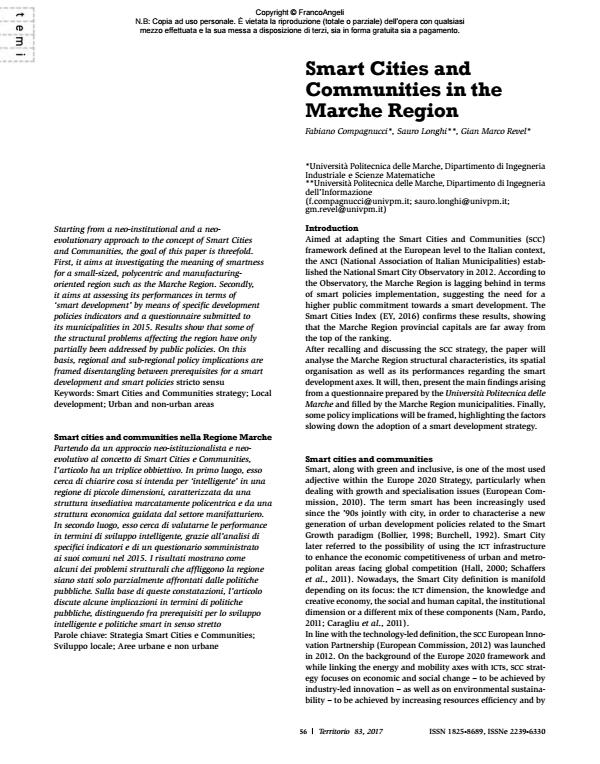Smart Cities and Communities in the Marche Region
Journal title TERRITORIO
Author/s Fabiano Compagnucci, Sauro Longhi, Gian Marco Revel
Publishing Year 2018 Issue 2017/83
Language English Pages 6 P. 56-61 File size 245 KB
DOI 10.3280/TR2017-083007
DOI is like a bar code for intellectual property: to have more infomation
click here
Below, you can see the article first page
If you want to buy this article in PDF format, you can do it, following the instructions to buy download credits

FrancoAngeli is member of Publishers International Linking Association, Inc (PILA), a not-for-profit association which run the CrossRef service enabling links to and from online scholarly content.
Starting from a neo-institutional and a neoevolutionary approach to the concept of Smart Cities and Communities, the goal of this paper is threefold. First, it aims at investigating the meaning of smartness for a small-sized, polycentric and manufacturingoriented region such as the Marche Region. Secondly, it aims at assessing its performances in terms of ‘smart development’ by means of specific development policies indicators and a questionnaire submitted to its municipalities in 2015. Results show that some of the structural problems affecting the region have only partially been addressed by public policies. On this basis, regional and sub-regional policy implications are framed disentangling between prerequisites for a smart development and smart policies stricto sensu
Keywords: Smart Cities and Communities strategy; Local development; Urban and non-urban areas
Fabiano Compagnucci, Sauro Longhi, Gian Marco Revel, Smart Cities and Communities in the Marche Region in "TERRITORIO" 83/2017, pp 56-61, DOI: 10.3280/TR2017-083007